“May we ever have joy and gratitude in our hearts that the Great Creator of all things, in His Love for us, has placed the herbs in the fields for His healing.”
“Heal Thyself” by Dr. Edward Bach
INTRODUCTION
History
Bach Flower Remedies were invented and developed by Dr. Edward Bach about 80 years ago. A prominent physician, Dr. Bach decided to leave his practice and focus on homeopathy. He left London and began researching plant essences and their effect on humans.
Edward Bach used his training and experience in bacteriology, vaccine therapy and homeopathy to lead him to a totally new philosophy of wellness. The culmination of his work was the creation of the 38 Bach flower remedies also known globally as Bachblüten, Flores de Bach, Bach flower essences and Bach flowers.
Dr. Bach isolated and classified 38 flowers from which he extracted 38 essences with which he succeeded in healing patient’s ailments while considering their individual emotional states. Dr. Bach found that certain flower essences led to self-healing, as they purified the patient of negative elements that adversely affected their health. Bach’s flower remedies were intuitively derived and based on his psychic perceptions of the plants.
Bach had three key insights. Firstly, observation of people per their outlook on life and personality (just as in homeopathy we have the great constitutional polycrests such as Pulsatilla, Nux vomica and others). Secondly, development of an ability to palpate one’s own intuitive sensitivity to the point where he could experience an emotional state, and then find the support from nature (in the form of an essence from the appropriate flower) that resolved this state. Thirdly, he developed a method of transferring the energy from the trees and flowers that he found helpful, to water which he then preserved with brandy, and so could dispense remedies from this source.
Treatment bottle
Making a treatment bottle involves putting four drops of each chosen essence into a 30ml bottle containing approximately 20 per cent brandy and 80 per cent water. The brandy acts as a preservative. If the bottle is for someone who wishes to avoid alcohol, merely placing some drops into very hot water will evaporate off the alcohol, or drops can be placed on the wrists, where a rich network of meridians is to be found.
Dosage
The recommended dosage is three to four drops on the tongue four to six times daily for, for up to about six weeks’ maximum. The remedies are entirely compatible with both prescribed medication and homeopathy. Sometimes one may be more appropriate than another – intuition and experience are useful guides here. Side-effects are rare, although sometimes people may get short-lived detoxifying symptoms such as a rash or a headache. Aggravations are very uncommon.
Once one layer has been treated and felt to change, then it can be useful to reassess and see what lies beneath!
Remedies used as Bach flowers and as Homoeopathic drugs:
- White chestnut or chestnut bud – AesculusHippocastum
- Clematis – Clematis Vitalba
- Mustard – SinapisArvensis
- Rockrose – HellianthemumNummularium
- Star of Bethleham – OrinithogalumUmbellatum
- Walnut – Juglans Regia
WALNUT (JUGLANS REGIA)
The walnut tree grows up to 100 ft (30m) tall and does well in protected areas, by hedges and in orchards. Male and female flowers grow on the same tree, the male ones in much greater number than the greeny females. The edible part of the tree is the fruit which is commonly available as a dried fruit.
WALNUT AND THE BRAIN
The first analogy that comes to one’s mind on looking at walnut is the human brain. Walnuts resemble the human head (the outer kernel resembling the bony calverium and the nut which looks like the brain with the left and right hemispheres, upper cerebrums and lower cerebellums. Even the wrinkles or folds on the nut are like the convolutions (sulci and gyrii) of the neo-cortex.
Walnuts are a prime example of what ancient herbalists called ‘the doctrine of signatures’ namely, herbs or foods that resemble various parts of the body and can be used to treat ailments of that part of the body. Nutritional science now confirms walnuts contain nutrients that are necessary for healthy brain function, such as omega-3 fatty acids and vitamin E. Walnuts provide great support for brain health, considering the brain is composed of approximately 30% omega-3 fatty acids (DHA, primarily) and require vitamin E and related fat soluble antioxidants readily found in walnuts to prevent oxidation (rancidity).
Clinical research also now exists on the brain-enhancing effects of walnuts. Moderate dietary walnut supplementation improves cognitive and motor performance and increases the brain’s inferential reasoning. They also help in developing over three dozen neuro-transmitters within the brain enhancing the signaling and encouraging new messaging links between the brain cells. Therapeutically, walnuts help in warding off dementia and extract and break down the protein based plaques associated with Alzheimer’s diseases, hence decreasing the chance of occurrences of these brain disorders.
Another important component of walnut is Salicylic acid. By this component, walnut imbibes many of its properties (especially pertaining to the skin) which are as follows:
Keratolytic Properties
It breaks down ‘keratin’, a protein that is part of the skin structure, hence rendering it useful as an exfoliant, because it helps skin shed the top layer of dead cells that can be dry, scaly and give skin a dull appearance. It is of excellent use for treating acne, because dead cells can clog pores and create a favorable environment for acne-causing bacteria. Salicylic acid is also known to eliminate warts, calluses and corns and for treating psoriasis, a condition involving excessive turnover of skin cells and scaly build-up.
Analgesic, Anti-inflammatory and Antipyretic Properties
These properties are additional reasons beneficial for treatment of acne vulgaris and psoriasis. Because of its anti-inflammatory properties, it is often used to treat arthritis, toothaches and other pains aggravated by inflammation. It is also used to treat minor bodyaches and pains, headaches and reduce fevers.
Anti-Fungal Properties
It also has anti-fungal properties and can be used to treat candidiasis and eliminate tinea, a fungus involved in various types of skin infections, which are tinea versicolor, tineapedis, tineacruris, tineacorporis and tineacapitis.
HAMAMELIDEAE FAMILY- THE HOMOEOPATHIC ASPECT
In terms of plant evolution, Hamamelidae plants are primitive plants. To some extent, they are like the Mangolia family. These people are airy and diffuse, and they need a framework to understand themselves. This family can be child-like and is in the primitive stage of evolution. In the primitive stages, focus, motivation and concentration are the most difficult things for patients.
There is also a theme of tiredness and heaviness, like being dead versus alive, focused and sharp. The patient is in a state of being unsure where they want to be, ‘here or there’. We see that they are often pondering how much they are in the sky versus the ground; they do not have balance.
When too much in the air, they feel free, floating and light and wish to be more grounded. When they are too grounded, they feel heavy and they desire to be light and free.
So, the main sensation of the Hamamelidae group is the feeling of closed versus open, heavy versus light. Closed is always associated with heavy, and open with light. So, the feeling is the combination of closed and heavy. You can also call it a feeling of oppression and the opposite is light and open. The interesting part here is that along with the feeling of closed and heavy also is the feeling of lack of stimulation of the senses. Something like colourless, soundless, spiceless, alone, shut in, in room with no window. But in this situation, there’s also an experience of security. And the opposite of this sensation is when the doors and windows are open and everything is free, light and floating. At the same time this also gives a feeling of insecurity. So, there is a kind of desire to be in both the places – inside and outside; and therefore, the division between the inside and the outside which is the window becomes the most important part of this family. A window is something that can be open and shut that keeps you inside as well as exposes you to the outside. When there is no stimulation, when there is no opening – that is the one side and the other side is – when everything is too open and there is too much stimulation. So, in Cannabis indica, you can have a feeling as if leading a vegetable existence with no sound, no colours nothing, or every colour looks brighter and every sound is louder. Everything is more beautiful and sensations are felt excessively as if the pores of the skin are wide open and ready to be stimulated. Everything is exaggerated, bigger, enlarged, and things can appear more frightful.
Walnut belongs to the family Juglandacea and the order Hamamelidae.
Cannabis is an old plant and has been used for thousands of years. And while the people from previous eras didn’t use cannabis like we do today, they were making use of the flower, namely for religious and medical intentions.
Many believe that cannabis led to a connection with God and helped to ignite closer communion to our true spiritual nature. The use of cannabis as a spiritual means to become closer with God dates far back. From ancient weed users to modern marijuana worshipers, cannabis holds a sacred spot amongst many religions worldwide.
Ancient Hindus believed marijuana was a gift from the gods, one that offered happiness and wellbeing and would help people gain liberation over fear. Shiva, the Hindu god frequently associated with cannabis, is also known as “Lord of Bhang.” When he discovered cannabis, he loved its effects and made it his favorite “food” and was thought to sustain a heavily induced cannabis stupor much of the time. It is thought that consumption of cannabis will bring one closer to Lord Shiva himself! Cannabis use has been a holy rite throughout time in many of the world’s religions, and there are millions that have felt “closer to God” after using cannabis.
Let us understand this psychedelia of the Hamamelideae family in a little more detail.
Addictions of Hamamelidae
One of the most important characteristics of the drugs of the Hamamelidea family is their potential to cause a state of dependency and addiction. To understand this, let us understand ‘cannabis addiction’ (commonly known as weed or marijuana) and its effects as a prototype for the family.
Some of the common symptoms of cannabis use are:
- Distorted perceptions
- Exaggerated senses
- Impaired coordination
- Difficulty in thinking and problem solving
- Problems with learning and memory
- In an acute state, there is a sense of escape from reality. The sense of colours is highly altered and so is the sense of smell.
- In such a state, people are easily impressionable and desire constant stimulation.
Effects of long term cannabis abuse:
These are commonly seen in persons who have been consuming cannabis frequently for years. Cannabis consumption affects the general well being of the body. However, the main organs affected are:
Mind
- Anxiety that persists for no apparent reason
- A depressed state of mind
- Lack of desire to be social
- Schizophrenia like symptoms
- Acute psychotic reactions
- Irritability
Heart
- Increased heart rate by 20-100%
- Increased risk of heart attack
- Increased risk of cardiovascular vulnerabilities
Lungs
- Carcinogenic toxins causing lung carcinoma
- Increased exposure to acute infections
- Increased risk of pneumonia
- Dyspnoea
Effect on general well-being:
- Lack of motivation
- Physical impairment
- Mental impairment
- Reduced cognitive abilities
- Poor social life
Additionally, several other physical and behavioural signs of marijuana abuse are visible in frequent users:
- Red, blurry, bloodshot eyes
- Constant, mucus-filled cough
- Rapid heartbeat
- Hunger, referred to as munchies
- Dry mouth
- Poor memory
- Poor coordination
- Slow reaction time
- Loss of control
- Addiction
Withdrawal symptoms:
Persons who have been on cannabis abuse for a long period and then decide to quit experience the following symptoms:
- Sleeplessness
- Decreased appetite, which can trigger disordered eating
- Drug craving
- Dysphoria (anxiety, irritability, depression, restlessness)
- Disturbed sleep
- Gastrointestinal symptoms
- Decreased appetite
- Insomnia
- Poor appetite
- Agitation
- Cravings
- Mood swings
WALNUT AS A BACH FLOWER REMEDY
“Change in life” is the key indication to prescribing walnut. At every changing stage of life, like teething, puberty, change of country, change of religion, change of occupation, etc, Walnut is one of the most important remedies that comes to the rescue of the patient.
This remedy is for those who show up with physical suffering when starting on a new direction, breaking the old norms and conventions. Therefore, it is very often indicated in newly married women who are struggling to adapt in the new environment. It helps break links with the past so that one can move forward more easily. Walnut promotes adaptability, emotional flexibility and protection during times of change.
These patients are generally the ones who have the determination, however, for some period they may be influenced by factors that put their determination and plans for a toss. They need to be free from these influences. They are commonly heard using expressions like “I want freedom”. It is the remedy to help protect us against outside influences in general, and against the effects of change.
The strongest attributes of Walnut are determination, courage and consistency. They generally carry out their life’s aims without getting hindered by such influences. They are not deterred by ridicule and adversities. These are the pioneers, the achievers, the inventors.
A person in a negative Walnut state may wish to go forward, but is held back, tied to the past by forces he may or may not recognize. This could be the subconscious effect of a wrong decision made long ago, or it could be the boring stability of a present job, along with the insecurity of starting a new business. They may want to change a part of their lives that is not satisfying, but the known devil may seem safer than the unknown. Dr. Bach called this Bach Flower Remedy the “breaker of spells,” for its ability to untie the bonds that hold one to the past. For this reason, the remedy is often used in treating all sorts of addictions, especially nicotine.
A person in the positive Walnut state is completely free in spirit, able to set sail for new horizons. He makes progress in fulfilling his life missions, unaffected by outer circumstances and the opinion of others. Dr. Edward Bach himself is a very good example of a positive walnut personality type. When he let go of social approval, financial security and the traditions of orthodox medicines and set forth to categorize and identify what became known as the Bach Flower Essences, he made a major change in life and followed his goal while ignoring the disapproval of friends and former colleagues.
Homoeopathic indications of walnut
MIND:
- Excited in the evening, feeling as if head were floating in the air, as if intoxicated.
- Mental indolence, inattention and disinclination to work or talk in the evenings.
EYES:
- Styes
- Pressive pain above left eye, worse with motion.
EARS:
- Aching and fullness, with pustular discharge from both ears.
FACE:
- Swelling of left cheek and upper lip.
FEMALE:
- Menses early, profuse accompanied by general exhaustion and loss of appetite.
- Black discharge with black clots.
- Pressive drawing pains in abdomen before menses, worse by motion.
MALE:
- Frequent erections day and night.
- Burning in the penis after sexual intercourse.
GIT:
- Tongue coated white and slimy with bitter taste in the morning.
- Fullness, heaviness in abdomen. Pain in epigastrium and above the umbilicus. Pressure and drawing pain in the region of the spleen. Violent, frequent and loud belching. Hiccoughs more violent after eating. Nausea early in the morning, 6am, causing the patient to wake up.
- Unusually great appetite with thirstlessness.
- Aversion to wine and tobacco smoking, especially in the evenings.
- Stools large, liquid with pain in the abdomen. Stitches and burning in rectum causing the patient to walk about.
MUSCULO-SKELETAL SYSTEM:
- Stitches in the sacral region causing trembling.
- Drawing and stitching pain in legs and knees, with weakness.
SKIN:
- Eruptions behind the ears in children.
- Itching on right leg and right fingers.
- Crustalactea with itching.
- Itching of scalp, violent at night.
- Comedones and acne on face, shoulders and back; small red pustules.
- Chancre-like ulcers.
- Axillary glands suppurate.
URINARY SYSTEM:
- Loss of tone of the detrusor muscles.
- Frequent desire to pass urine.
- Involuntary urination.
- Urine scanty and clear.
From the above information, it may be inferred that “Walnut” is a potentially therapeutic remedy by its judicious use in everyday practice!
CASES
Following are 2 cases from the clinic to further highlight the essence of Juglans R. (Walnut) and its practical utility and indications
Both the cases are varied in presentation i.e. with respect to its history, therefore discussed themes emerge very strongly in both, hence strengthening the prescriptive surety of the drug in discussion, Walnut.
Case 1: “I feel hollow within”
The patient is a 22 year old male, originally a Bulgarian, brought up in South Africa. He is an expat, studying Vedanta at a teaching institute in India. He is the only child of his parents. He often felt left out by his group of friends. He studied in an all-boys high school where masculinity was very exaggerated because everyone wanted to be the ‘Alpha’ by seeking female approval. The patient also sought after it but saw the superficial fulfillment one got from that, because of which he became more introverted in the company of girls.
The patient is extremely sensitive to how others treated him resulting in a lot of anxiety, fear of rejection and not feeling good enough with need for acceptance from others. This always led him to exert himself beyond his limits to outdo himself.
Superficiality, meaninglessness and lack of fulfillment are the feelings that occupied his teen years. He often sought answers about himself, existence and God. Hence he started analyzing himself and understanding things to overcome his negative emotions. He then tried to escape by using tea, coffee, cigarettes, sleep, sex and even psychedelic drugs in pursuit of answers but none seemed to help.
At the end of the first year of his engineering studies, he reached a point of understanding that there was nothing in terms of self-development for him in South Africa, and the only thing that resonated with him was a Vedanta academy in India and so he is living in the ashram, in hope that his experiences here will lead him to self realization.
Chief complaints:
- Leg and knee pain- tightness in the hamstrings, groin and back. Sensation as if something moved out where it shouldn’t be. As if everything is elongated/ stretched <squatting, sitting cross-legged, exercise, playing sports. >rest.
- Recurrent pilonidal abscess (since 2012)
- Left shoulder pain (since 2014)- nagging discomfort, grinding sensation as if the whole ligament or tendon is scarred. <rotation of shoulders as in tightening of a screw/ bolt.
- Recurrent acne with scarring and sometimes keloid formation. <anxiety/ agitated state of mind. >when content.
- Felt like a vegetable.
- Sensation of deadness, hollow, as if empty, nothingness.
- A/F: Mind- emotional stress, feeling of not fitting in, low self-esteem, fear of rejection from opposite sex, disappointment in love, conflicted mind.
- Physical- substance abuse, smoking, injury during sports, falls, etc.
Dreams:
- Watching himself flying like in a video game.
- Thrown into space by a giant after being squished.
- Terrifying dream of being caught naked, due to sudden disappearance of clothes when swimming in a pool.
- In a fair, a group of monkeys stole his parents. He was then completely alone and scared as parents were all that he had and he was the only child.
Physical Generals:
- Sleep paralysis- can’t move even if woken up with eyes open, body feels made up of lead.
- Masturbation since age of 10.
Desire for nuts especially pecan nuts (pecan nuts belong to the same plant family as that of walnuts)
Substance abuse.
The patient used the word ‘hollow’ multiple times. On elaboration of the same, he mentioned that ‘hollow’ is empty, nothingness inside. Like a nut, nutshell. There is nothing at all even though its initial appearance shows there to be something. The patient, during describing, shifts from the nut to talking about himself spontaneously and seamlessly as if they are one and the same thing. On being asked to visualize the first nut which comes to his mind, he says it is pecan nut, they are very common in Bulgaria. He further describes the characteristics of the nut saying it is dry, flavorless when we start biting but then it starts staying in the mouth, very fulfilling, full flavor, full wholesome nutty taste that is strong and looks like a little brain. He says “I can always enjoy myself with nuts.”
Analysis:
As we see in the case, the patient is extremely oversensitive especially to external influences and ideas. He is looking for freedom from the limiting influences and seeks courage to follow his own path and destiny, wanting to break away the shackles of his dark past and move on. The dreams pave way to his suppressed ideas and hence he imagines himself flying! There is a need to escape from reality hence finding solace in substance abuse and religious retreat. Also, his way of personification of the nut with himself and its characteristics especially that relating to “hollowness” though the nut appears “filled” is a strong pointer to the hamamelidae feeling of contradictory state of one’s own existence. The physical general of desire for nuts is a confirmatory addition to the above thought.
Rubrics from Bach repertory suitable to the above case:
- ADDICTION, Breaking the habit
Chronic habit
- BRAIN FAG (mental exhaustion)
- CHANGE OF LIFE (Teething, Puberty, Move to a new place, Menopause, Death of a loved one)
- CONVENTIONS (heredity, family tendencies, traits),
To break
- DREAD, Of new persons, strange places
- KNEE problems
- MUSCULOSKELETAL PAINS (Neck, Shoulder, Arm, Head, Leg Pains etc):
To break the cycle of pain
Joint Pains
- NEW, jobs, places, residence, move, phase of life etc.
- SENSITIVE, New places, surroundings, atmosphere, strangers, to
- SMOKING, habit to overcome
Posology:
1M, single dose (since the patient is young and involved in intellectual work ie teaching, it can be inferred that he can withstand a high C potency with infrequent repetition.)
Follow up:
- The pilonidal abscess hasn’t leaked even once since start of treatment, which is the longest it has ever been since the start. It is usually correlated with his emotional state and generally it has been very flat and fine now, since he feels a lot better in terms of the emotional aspect, that is a lot lighter and more functional He is less affected by things around him now.
- He has started exercising a lot more, like doing the yoga, so physical health has improved.
- The hip still is a little swollen though it seems to be a bit smoother.
- For the past 2 months, he has masturbated a lot less, like once or twice.
- He says “there is certainly an internal development with which I am happy!”Now there have been longer periods where everything is fine. So, he is not that worried about health because he says he understands that he needs to control and understand circumstances and himself better and so he doesn’t worry about it because he knows the better he gets, the better that willhappen.
- He can concentrate on his job of teaching more and enjoys it.
- The back acne seems to have gotten more relaxed with fewer outbreaks.
- His lifestyle seems to be more controlled in terms of how he organizes everything. He does not put as much pressure on himself now to do things because things seem to be a bit smoother.
- He says “now there is a sense of self- realization and I can still do spiritual pursuit.”
Case 2: “The psychedelia of walnut”
The patient is a 45 year old male, brought up in Mumbai, India. He is an Ad-film maker by profession and runs an ad-film company called ‘Mothership’, the implication behind the name being a company that would tackle different kinds of production work that the client needed and not limit themselves and has all facilities required in-house. The name is inspired from a Led Zeppelin album (famous 60’s music artist) which had a lot of different kinds of songs and which was also his favorite album.
He enjoys listening to and making music, and is highly into different kinds of rock music like industrial rock, soft rock, progressive rock and psychedelic rock.
The patient grew up being raised by their maid who had a very good and strong influence on him. Still, he felt he would have enjoyed more freedom while growing up. There was a sense of unfairness and of being tied. He felt over-protected by his parents, like at a loss of an experience. Though in retrospect, he feels those restrictions weren’t completely unfair. They helped to keep him grounded, be more productive with his life, unlike some of his friends of that time who aren’t doing much with their lives currently.
Chief complaints
- Sebaceous cysts for 5-6 years.
Pustular discharge and swelling
Pain when it stretches, restricts the movement
Feels abnormal
The stretch is like a fruit growing out of a plant and eventually just squishes out, like a fig, especially when it’s swollen.
- Acne since16 years of age
Pustular
Leaves scars
- Physical generals:
Habits: Smoking cannabis since a young age, Tobacco smoking
Desires: dried fruits
Analysis:
This is a patient who feels the need to express creatively and not be restricted by anything in doing so. This probably stems from his need to feel freedom from the restrictions levied upon him in the younger years of his life which drew him towards addictions of cannabis and tobacco in his quest to find the same. However, in retrospect he believes those restrictions were not all unnecessary and have helped him make something of his life and remain grounded, unlike his friends who have drifted. He also enjoys rock music which he describes as something that is psychedelic.
On the physical aspect, he has suppurative tendencies in the form of acne since a very young age (at the change of life when he started picking up the addictions of cannabis and tobacco) and sebaceous cysts which become swollen, pus filled and painful.
Rubrics from Bach repertory suitable to the above case:
- ADDICTION, breaking the habit
Chronic habit
- CONVICTIONS, strong
- COSMOPOLITITIAN
- SMOKING, habit to overcome
- CHILDREN, troubles, Growing
- CONVENTIONS (heredity, family tendencies, traits)
To break
- CHANGE OF LIFE (Teething, Puberty, Move to a new place, Menopause, Death of a loved one)
General
- MODALITIES, Worse with/resistant to any type of change, to ease transition
Posology:
Juglans Regia 1M stat dose
Juglans Regia 0/3 5jerks once daily
SL pills twice daily
(The patient is young, hence the high 1M potency. However, since there is also pathology involved, repeated small LM doses would help sustain recovery and cure)
Follow up:
- Pilonidal sinus (Homeopathy Treatment for Pilonidal Sinus) completely resolved
- Acne better, no pustular discharge
- Sebaceous cyst better, no suppuration
- Number of cigarettes smoked daily is almost the same
- Need for stimulants reduced
- Need for a ‘high’ from cannabis reduced – “I’ve barely smoked up in the last couple of months”.
- Emotionally much better. “I’m able to deal with situations better, to let go and just go with the flow. Things don’t bother me as much now as they used to earlier”.
Common themes between the two cases:
- Ailments from phases of transitions of life
- Need for being grounded
- Need for freedom of expressing / being himself
- Addictions, especially to cannabis
- Breaking addictions
This article is a work from the Mumbai team of Anandawellness, a chain of homoeopathic clinics by Dr. Sunil Anand. www.anandawellness.in
References:
- Robin Murphy’s Lotus Materia Medica
- Bach flower remedies by Dr. V Krishnamoorty
- Bach flower remedies by Dr. D.S. Vohra
- Bach flower Therapy by Dr. Mechthild Scheffer
Save

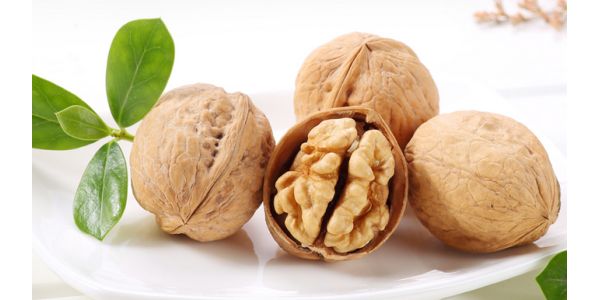
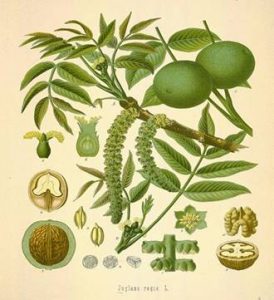
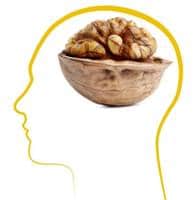

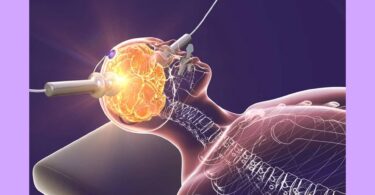
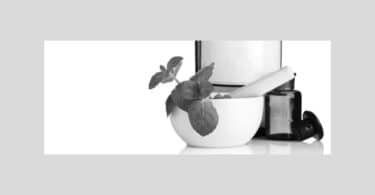
Thank you for the interesting article. Can you please post any links if possible regarding :
Bach flower remedies by Dr. V Krishnamoorty
Bach flower remedies by Dr. D.S. Vohra
I found the following from the last two days that might be of interest:
https://www.sciencedaily.com/releases/2017/07/170728100832.htm
https://www.sciencedaily.com/releases/2017/07/170718142909.htm
Thanks.